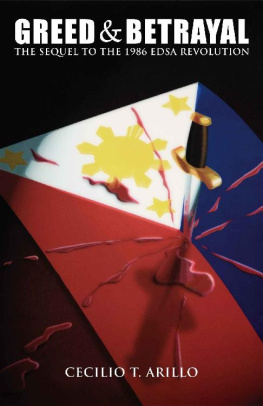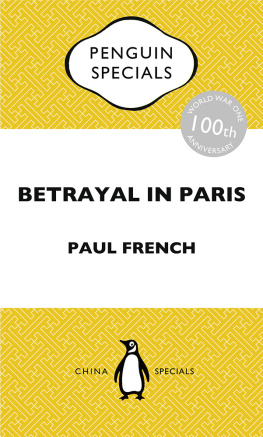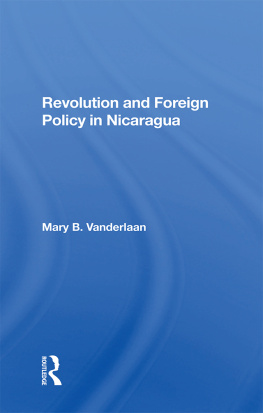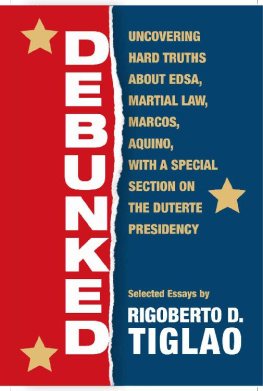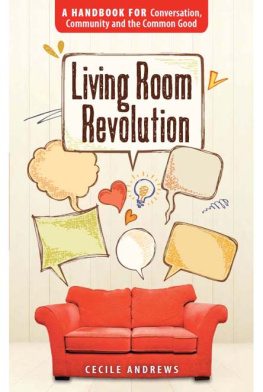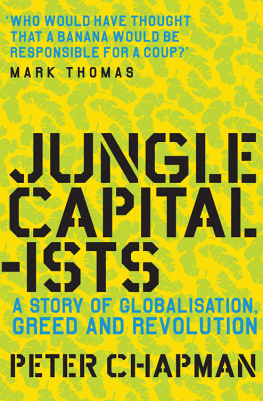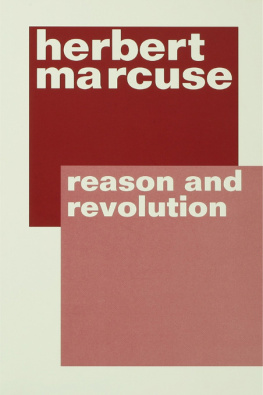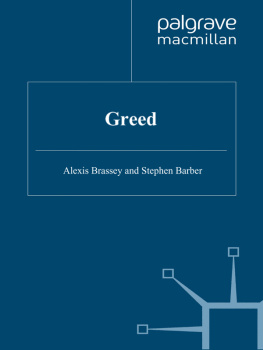GREED & BETRAYAL
THE SEQUEL TO THE 1986 EDSA REVOLUTION
A country of yellow fever victims
As the elitist image of the Aquino regime permeated society as a whole, its propaganda experts began to shape the political landscape as well, and transformed most of the unsuspecting citizens into consumers of its own brand of illiberal democracy symbolized by the yellow banner, the yellow ribbon, and the yellow confetti.
CECILIO T. ARILLO
First published in 2000, Arillos Greed & Betrayal relived the events that marked the Aquino regime s bungled presidency and how it systematically and repeatedly blamed Marcos , Enrile , Honasan, Laurel , Mitra , and others as the all-purpose excuse to hide its own incompetence , failures, and perfidy.
Copyright (C) 2000 by Cecilio T. Arillo
All Rights Reserved.
No part of this book may be reproduced in any form or by any electronic or mechanical means including information storage and retrieval systems without the written permission from the author or publisher.
US Congress Cataloging-in-Publication
Arillo, Cecilio T.
Greed & Betrayal
Philippine National Library CIP Data
Arillo, Cecilio T.
Greed & Betrayal
Printed in the Philippines by IAME Design Studio (The Printing Press)
Noli Santos International Tower
1061 Metropolitan Ave., San Antonio Village, Makati City.
Tel. (632) 896-23-40
Cover design by Rey Santos and Wyn Zysman
ISBN 971-91037-1-X
Re-published in the US for worldwide distribution by CreateSpace
www.createspace.com
7290 Investment Drive, Suite B, North Charleston,
SC 29418 USA
September 2011
CONTENTS
Acknowledgments
Writing a book of this kind, especially in an adverse situation, requires the cooperation of some people. I would like to offer my thanks to Kerima Polotan, for her numerous suggestions after reading my first draft; Chito Lozada, for reviewing Chapters 1, 9, and 10 while I was in Japan and South Korea on June 2-7, 1999 covering President Estradas official visit; Senate President Blas Ople, for his encouragement and for allowing me access to his databank; Sen. Juan Ponce Enrile, whom I interviewed while traveling (under a temporary court order) with him and his wife Cristina to Switzerland, Czechoslovakia, Poland, Hungary, Romania, and the United Kingdom in Oct. 1995; and,
For a series of interviews, President Fidel V. Ramos, Vice President Salvador Laurel, Speaker Ramon Mitra Jr., Sen. Gregorio Honasan, Sen. Ernesto Maceda, Sen. Roberto Barbers, Sen. Vicente Sotto, Sen. Ramon Magsaysay Jr., Sen. Rodolfo Biazon, Rep. Luis Baby Asistio, Rep. Raul Gonzalez, Rep. Sergio Apostol, Rep. Roilo Golez, Dr. Bernardo Perez, Camarines Sur Gov. Luis Villafuerte, retired Gen. Salvador Mison, retired Lt. Gen. Romeo Padiernos, and many others, including those who chose to remain anonymous.
My heartfelt gratitude goes to my wife Mimi, for her skills in desktop publishing and marketing; my daughter Candace, for reading some of the research materials; my other children and other people, for praying for my safety in those hours of danger; Mae Aldana, for reviewing the manuscript; Letty Magsanoc, for allowing me to write in the Inquirer my expose on the Philippine Sports Commission at a time when other newspapers avoided me for being a security risk; the courageous people in the Reformthe Armed Forces Movement, the Soldier of the Filipino People, and Young Officers Union, for their trust and for securing my family; the kind people in the records, bills, and index sections of Congress (Senate and House); the nice people in the Presidential Commission on Good Government, the Ombudsman, the Sandiganbayan, and other courts; the helpful and courteous staff members of the Freedom from Debt Coalition; and the press offices of Malacaang and Congress.
Again, thank you with all my heart.
CTA
February 2000
Introduction
This book may be considered as a continuing episode in the perils faced by the author and many other journalists whose dedicated pursuit of the news invariably gets them into trouble with the authorities.
Cecilio T. Arillo (Cecil to his friends) had his travails under three administrations. He was incarcerated under the Marcos martial law regime for his stories on the irregularities in the sugar industry. Under the Aquino administration, he was again arrested on Dec. 9, 1987, by troops led by Brig. Gen. Ramon Montao, and jailed without formal charges; after that, armed men broke into his offices and carted off his documents and other valuables; then in 1990, the Department of Justice, under Sen. Frank Drilon, charged him with rebellion. In 1992, unidentified men machine-gunned his house. In 1998, under the Ramos administration, the Justice Department, whose chief was Sen. Teofisto Guingona, implicated him in the 1986 kidnapping and double murder of labor leader Rolando Olalia and his driver, Leonor Alay-ay.
The background to all these depredations, as Arillo saw it, were the stories he filed as Manila Times columnist and reporter about the corruption, human rights violations, gross misgovernance, hatred, and vengeance of the Marcos, Aquino and Ramos regimes.
The only evidence the Aquino government had for charging me with rebellion, Arillo revealed, was that I was at the Channel 4 complex in 1989, armed with a pen and a tape recorder, covering the (attempted) coup for Malaya and Abante along with 30 other journalists.
With the Enrile-Ramos breakaway tandemfrom Marcos in 1986 (he wrote a book about it with the same title), he was ridiculously accused in the 1989 coup attempt along with rebel soldiers of killing 91 people, wounding 560 others, and of illegal possession of large quantities of explosives and firearms as if he stole the entire arsenal of the Armed Forces.
Fighting to clear his name, Arillo in 1995 asked President Fidel V. Ramos to correct the injustice done to him as a citizen and a journalist. Told to avail of an amnesty, he accordingly filed a request and informed the National Amnesty Commission that he was mistaken for a rebel soldier while covering the 1989 coup.
In granting his request, the Commission strangely noted that the applicant claimed membership in the RAM-SFP-YOU the Reform the Armed Forces Movement, the Soldier of the Filipino People, and Young Officers Union.
However, all were to be resolved when Judge Tirso D.C. Velasco of Branch 88 of the Regional Trial Court in Quezon City dismissed the rebellion charges against him on Jan. 21, 1997 and on the recommendation of a five-man prosecution panel, Justice Secretary Serafin Cuevas dropped his name from the complaint on the Olalia-Alay-ay kidnapping and double murder case.
In all these ordeals, Arillo never belied that neither President Aquino nor Ramos and Marcos relatives were involved, but rather some shadowy characters that wanted to endear themselves to the ruling powers, or who were prejudiced by his exposes. Some probably resented the fact, according to Cecil, that he was Sen. Juan Ponce Enriles friend.
I think, however, that friendship and personal loyalty have less to do with the travails of journalists in the pursuit of the news wherever it may lead.
In a sense, Cecilio T. Arillo is luckier than the 84 journalists who have been murdered or slain in the line of duty in the past 32 years and four months: 32 in the Marcos years, 34 during the Aquino presidency and 18 in Ramos watch.
It goes with the territory, as veterans in the profession would say.
Arillo has shown what a journalist ought to do when he survives the perils of the trade. Write a book.

